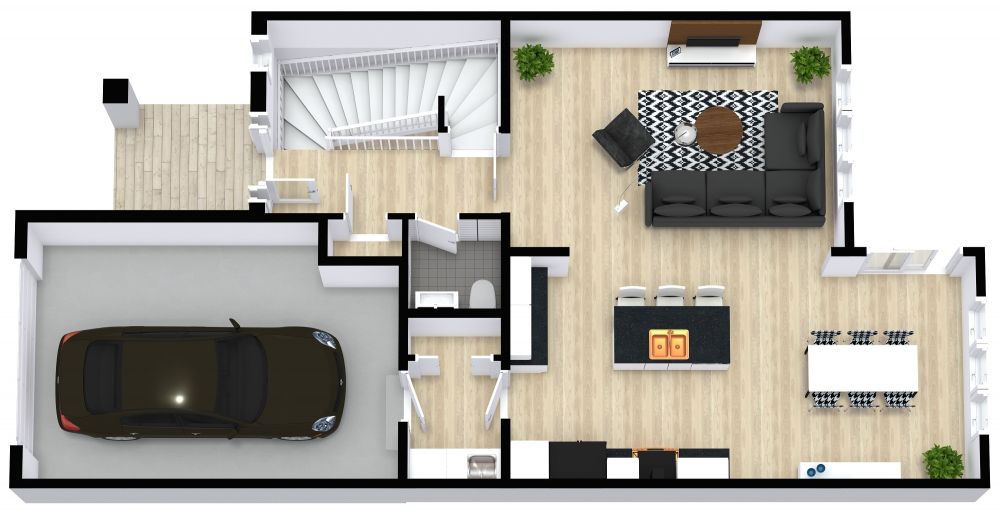In the realm of architectural wonders, the groundwork laid through ground plans is nothing short of an alchemical fusion of art and functionality. These blueprints serve as the very essence of a structure, dictating its form, flow, and purpose. Join us on an enchanting journey as we unravel the intricacies of ground plans, where every line drawn is a whisper of the architect’s vision and the heartbeat of a building’s soul.

The Canvas of Design: Types of Ground Plans
- The Dance of Symmetry:
Symmetrical ground plans, often associated with classical architecture, create a sense of balance and order. Mirrored layouts on either side of a central axis offer a timeless elegance, seen in structures like palaces, temples, and classical estates. - Asymmetry and Eclecticism:
Embracing a departure from classical norms, asymmetrical ground plans introduce an eclectic charm. Modern structures often utilize this approach, allowing for dynamic spaces, unexpected angles, and a fluid interplay of forms. - The Labyrinth of Open Concepts:
Open concept ground plans redefine spatial relationships, breaking down barriers between rooms. Popular in contemporary design, this layout enhances connectivity, natural light, and a sense of airiness within a space.
Materials Shaping the Earth: Ground Plan Components
- Bricks and Mortar:
The choice of materials in a ground plan lays the foundation, quite literally. From traditional brick and mortar to modern concrete, each material contributes to the structure’s durability, aesthetics, and environmental impact. - Glass:
Transparent elements in ground plans, facilitated by glass, redefine spatial experiences. They introduce natural light, blur indoor-outdoor boundaries, and provide a visual spectacle. Glass-walled structures offer a modern aesthetic while embracing connectivity with the surrounding environment. - Steel Skeletons:
The incorporation of steel in ground plans allows for expansive, open spaces and soaring heights. Commonly found in skyscrapers and contemporary industrial designs, steel provides structural strength while allowing for creative freedom in architectural expression.
The Symphony of Flow: Circulation in Ground Plans
- Spatial Efficiency:
Ground plans orchestrate the flow of movement within a structure. Efficient circulation considers the daily rhythms of occupants, ensuring seamless transitions between living spaces, work areas, and recreational zones. - Zoning Strategies:
Effective zoning in ground plans allocates spaces based on functionality. Residential layouts may include private zones for bedrooms, communal spaces for gatherings, and transitional zones for circulation. Commercial structures often integrate workspaces, meeting areas, and public zones to optimize productivity and engagement. - Adaptable Flexibility:
Ground plans are evolving to accommodate the dynamic needs of occupants. Flexibility is becoming paramount, with movable partitions, multifunctional spaces, and adaptable designs that respond to changing lifestyles.
Technology’s Imprint: Ground Plans in the Digital Age
- Smart Integration:
In the digital era, ground plans are embracing smart technology. Automated systems for lighting, climate control, and security seamlessly blend into the design, enhancing comfort, energy efficiency, and overall living experience. - Virtual Reality (VR) Design:
Architects now utilize VR technology to immerse clients in virtual walkthroughs of proposed ground plans. This interactive approach allows stakeholders to experience the spatial design before construction, fostering collaboration and informed decision-making.
Sustainability Beneath Our Feet
As environmental consciousness grows, ground plans are adapting to eco-friendly principles. Sustainable designs incorporate energy-efficient systems, renewable materials, and strategies for minimizing the ecological footprint of a structure.
Conclusion: Ground Plans as Artistic Blueprints
In the grand tapestry of architectural creation, ground plans stand as the artistic blueprints that give life to a structure. From the classical dance of symmetry to the modern embrace of smart technology, each ground plan is a unique composition, a reflection of the architect’s vision, and a testament to the ever-evolving artistry of construction. As we step into the future, the alchemy of ground plans will continue to shape the skylines and landscapes that define our living spaces.